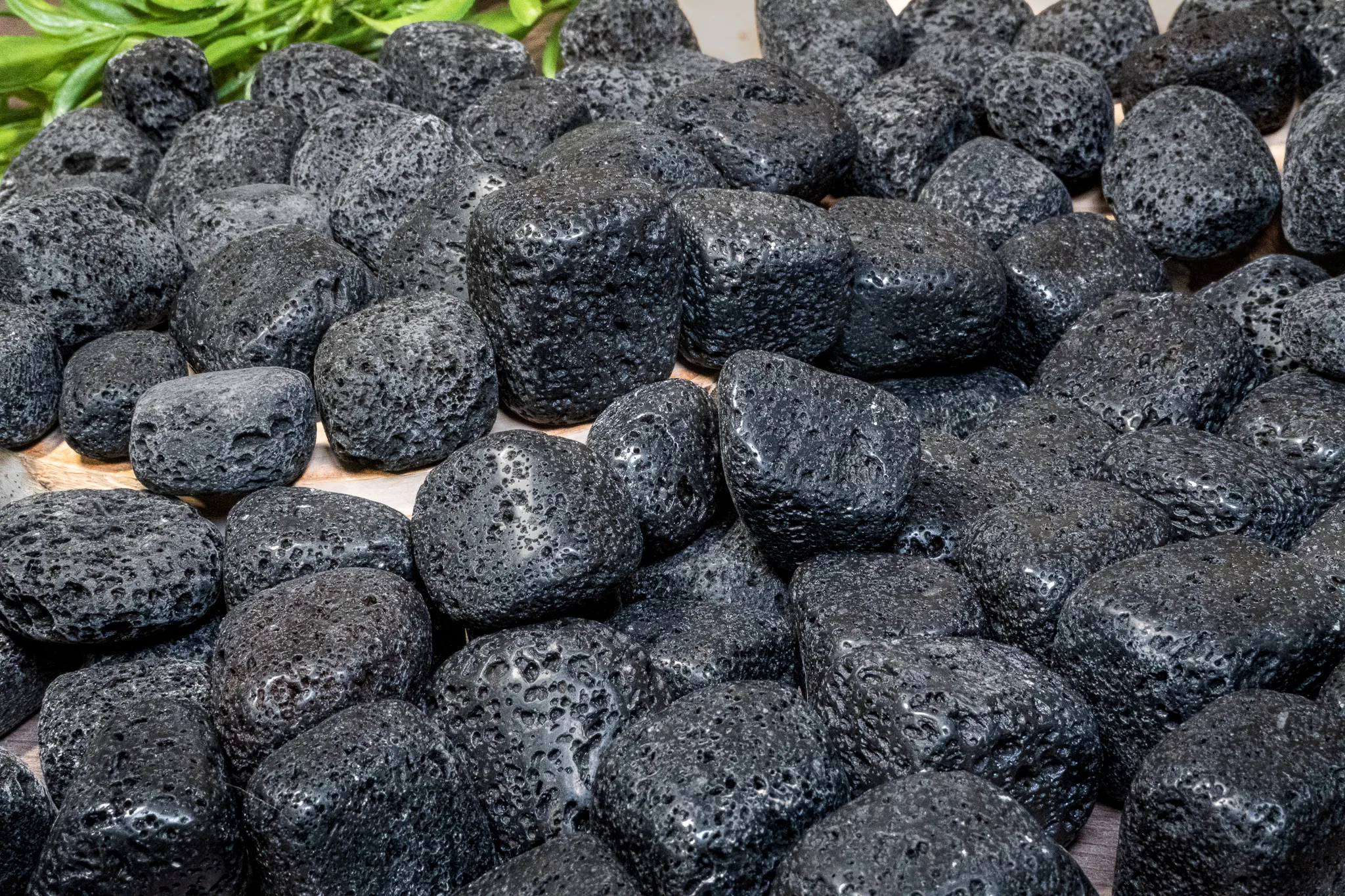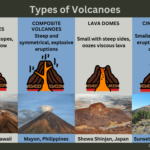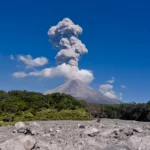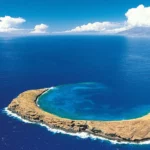Volcanic rocks and minerals are like the fingerprints of the Earth’s fiery past. They’re formed when molten rock cools and hardens, and they can tell us a lot about what’s going on deep down in the planet. I’m a geologist, and I love studying these rocks and minerals because they can help us understand how volcanoes work and how they’ve shaped our planet over time. So, buckle up and let’s dive into the captivating world of volcanic rocks and minerals!
Volcanic Rocks and Minerals: The Enchanting Legacy of Earth’s Fiery Past
Picture this: the Earth erupts in a fiery spectacular, spewing molten rock into the heavens. As this molten lava cools and solidifies, it transforms into an array of captivating volcanic rocks and minerals, painting vivid scenes of our planet’s fiery past.
Unraveling the Mystery of Volcanic Rocks
Volcanic rocks are a fascinating tapestry of colors and textures, each piece telling a story of the eruption that birthed it. From the dark, fine-grained basalt to the shimmering obsidian, these rocks reveal the secrets of their volcanic origins.
A Treasure Trove of Minerals
Hidden within the volcanic rocks lies a treasure chest of valuable minerals, like gold, copper, and diamonds. These riches are not just pretty stones; they play a crucial role in our industries and technologies.
The Magic of Volcanic Rocks and Minerals
Volcanic rocks and minerals have a hand in shaping our world:
- From the roads we drive on to the energy we use, these rocks provide us with essential materials.
- Volcanic ash nurtures our soil, giving life to vibrant plant life.
- And under our feet, volcanic rocks may hide geothermal heat, a renewable energy source.
Delving into the Secrets of Volcanic Systems
Studying volcanic rocks and minerals is like decoding the secret language of the Earth. By cracking their codes, we unravel the mysteries of volcanic eruptions, their impact on our environment, and the potential hazards they pose. This knowledge is priceless, guiding us towards informed decisions and helping us appreciate the awe-inspiring beauty of our planet’s fiery spirit.
Interested in learning about the most infamous geological formations on Earth? Delve into our comprehensive guide to famous volcanoes, where you’ll discover their captivating histories and awe-inspiring eruptions.
Unveiling the enigmatic world of volcanoes, our dedicated exploration dives into the Types of volcanoes that exist, unraveling their distinct characteristics and behaviors.
Uncover the potential risks and hazards associated with these fiery mountains in our in-depth analysis of Volcanic hazards and risks. Learn about the devastating consequences and precautionary measures to ensure safety.
Journey through time as we recount some of the most significant Famous volcanic eruptions in history. Witness the profound impact these cataclysmic events have had on human civilization.
Explore the intricate relationship between Volcanoes and climate change, unraveling how these natural wonders influence our planet’s atmospheric conditions.
Embark on an adventure of safety and exploration as we guide you through the captivating world of Volcano tourism and safety. Discover the thrill of witnessing these majestic forces firsthand, while adhering to essential safety protocols.
Delve into the fascinating realm of Volcanic islands and archipelagos, uncovering the unique ecosystems and geological formations that define these isolated paradises.
Harness the power of nature with our exploration of Geothermal energy from volcanoes. Discover how these volcanic wonders can provide sustainable energy solutions.
Venture beyond our planet as we explore Volcanoes on other planets, revealing the presence of these geological marvels in our solar system and beyond.
Stay informed and prepared with our comprehensive coverage of Volcano monitoring and prediction techniques. Learn about the cutting-edge technologies and strategies employed to forecast volcanic activity and mitigate potential risks.
Where can volcanic rocks be found?
Volcanic rocks are like nature’s sculptures, created by the fiery dance of lava and the Earth’s crust. They’re not just found around volcanoes; they’re scattered in a wide range of places, each with its own story to tell.
Hotspots:
Imagine a spot in the middle of the ocean or under a continent where hot, molten rock from deep inside the Earth bubbles up like a giant zit. As it erupts, it spews out lava that cools and forms volcanic rocks. Hawaii’s Big Island is a prime example of a place formed by this volcanic hotspot.
Plate Boundaries:
Volcanoes love to hang out where tectonic plates collide. Here, the Earth’s crust gets squeezed, mashed, and melted, giving birth to volcanoes that erupt volcanic rocks. The Pacific Ring of Fire is like a volcanic playground, with tons of volcanoes and volcanic rocks lining its shores.
Flood Basalt Provinces:
Sometimes, volcanic eruptions are not just a quick burst, but a massive outpouring. These huge, flat areas called flood basalt provinces are created by rivers of lava that just keep flowing, covering the land with thick layers of volcanic rock. The Deccan Traps in India and the Columbia River Basalt Group in the US are prime examples of these volcanic landscapes.
Ancient Volcanic Centers:
Not all volcanoes are active. Some have retired and become dormant or extinct. But the scars of their past volcanic activity remain in the form of volcanic necks, lava domes, and other formations. These remnants give us a glimpse into the geological history of a region.
Exploring and Studying Volcanic Rocks:
Volcanic rocks are like time capsules filled with clues about our planet’s past. Scientists study them to figure out how volcanoes work, where they’re likely to erupt, and what the composition of the Earth’s mantle is like. This knowledge helps us understand our planet and prepare for volcanic hazards.
How are volcanic rocks classified?
Imagine this! You’re trekking along a rugged path, admiring the stunning rock formations that dot the landscape. As you marvel at their beauty, you can’t help but wonder, “How did these majestic rocks come to be?” Well, let’s dive into the fascinating world of volcanic rock classification to uncover the secrets behind their unique origins.
Chemical Composition: The Silica Showdown
When a volcano erupts with molten lava, once it cools and hardens, it becomes volcanic rock. The chemical makeup of these rocks depends on the amount of silica they pack. Silica, a mineral like the grains in sand, plays a crucial role in determining the rock’s appearance.
Rocks with high silica content, known as felsic rocks, boast light hues, while rocks with moderate silica levels, called intermediate rocks, take on medium shades. On the other hand, mafic rocks, with their lower silica content, favor darker colors. And ultramafic rocks, the silica-deficient ones, are the darkest of them all.
Texture: A Tale of Crystals
Just as our fingerprints make us unique, volcanic rocks have their own identifying characteristic: texture. This is influenced by the size and shape of the crystals they possess.
Aphanitic rocks, like finely ground coffee, have minuscule crystals that blend seamlessly. Porphyritic rocks, in contrast, have larger crystals standing out amidst a crowd of smaller ones, like raisins in a chocolate chip cookie. Glassy rocks, however, break the crystal-forming norm, sporting a smooth, glassy surface.
To Sum It Up
Understanding volcanic rock classification is like piecing together a puzzle. Each volcanic rock has a unique combination of chemical composition and texture, giving it its distinct character. By deciphering these puzzle pieces, we unravel the captivating story behind the rocks that form the very foundation of our planet.
What is the chemical composition of volcanic minerals?
Picture this: deep beneath the Earth’s surface, molten rock bubbles and erupts, spewing forth fiery lava. As this lava cools and solidifies, it transforms into a myriad of volcanic minerals, each with its own unique chemical fingerprint.
Volcanic minerals are like tiny building blocks, their foundations laid by the element silicon. This silicon forms a framework of interlocking tetrahedra, bonded by oxygen. This silicate structure is the backbone of volcanic minerals, giving them their strength and resilience.
Adding to this foundation are other elements, like trusty aluminum and iron, which lend their strength and color. Calcium, sodium, and potassium play supporting roles, influencing the mineral’s personality and behavior. These elements dance together, creating a symphony of mineral diversity.
But wait, there’s more! Trace elements, like hidden treasures, add a touch of individuality to each volcanic mineral. They may enhance its beauty or give it special powers. These elements hold valuable clues about the mineral’s formation and the volcanic environment it emerged from.
So, what makes up these fascinating volcanic minerals? They’re like a melting pot of elements, each contributing its own unique flavor:
| Element | Role |
|---|---|
| Silicon | Master architect, forming the silicate skeleton |
| Oxygen | Constant companion, bonding with silicon |
| Aluminum and Iron | Strength and color providers |
| Calcium, Sodium, Potassium | Versatile supporting actors |
| Trace Elements | Hidden gems, adding individuality |
Remember, the chemical composition of volcanic minerals isn’t set in stone. It varies depending on the makeup of the original lava and the conditions under which it crystallized. It’s like baking a cake: different ingredients and baking times can create different flavors. So, when it comes to volcanic minerals, every eruption brings its own symphony of chemical wonders.
FAQ
Q1: What is the difference between volcanic and igneous rocks?
A1: Volcanic rocks are a type of igneous rock formed from lava erupted from a volcano. All volcanic rocks are igneous rocks, but not all igneous rocks are volcanic rocks. Igneous rocks can also form from magma that cools and crystallizes underground.
Q2: How are volcanic rocks classified?
A2: Volcanic rocks are classified based on their mineral composition and silica content. The most common types of volcanic rocks include basalt, andesite, rhyolite, dacite, obsidian, pumice, gabbro, and diorite.
Q3: Where are volcanic rocks found?
A3: Volcanic rocks are found at plate boundaries and in flood basalt provinces. They are also found in volcanic islands and seamounts.
Q4: What are some of the common minerals found in volcanic rocks?
A4: Common minerals found in volcanic rocks include plagioclase feldspar, pyroxene, olivine, and hornblende. These minerals are typically formed when magma cools and crystallizes.
Q5: What are some of the uses of volcanic rocks?
A5: Volcanic rocks are used in a variety of applications, including construction, road building, and landscaping. They are also used in the production of glass, ceramics, and other materials.
- Sept 31 Myth: Unveiling Calendar Secrets - March 18, 2025
- How Long & Till December 18, 2025: Accurate Countdown Guide - March 18, 2025
- Discover Japanese Artists: A Complete History - March 18, 2025

















Comments are closed.